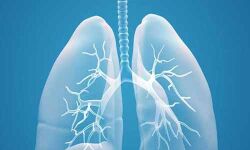- Home
- Medical news & Guidelines
- Anesthesiology
- Cardiology and CTVS
- Critical Care
- Dentistry
- Dermatology
- Diabetes and Endocrinology
- ENT
- Gastroenterology
- Medicine
- Nephrology
- Neurology
- Obstretics-Gynaecology
- Oncology
- Ophthalmology
- Orthopaedics
- Pediatrics-Neonatology
- Psychiatry
- Pulmonology
- Radiology
- Surgery
- Urology
- Laboratory Medicine
- Diet
- Nursing
- Paramedical
- Physiotherapy
- Health news
- Fact Check
- Bone Health Fact Check
- Brain Health Fact Check
- Cancer Related Fact Check
- Child Care Fact Check
- Dental and oral health fact check
- Diabetes and metabolic health fact check
- Diet and Nutrition Fact Check
- Eye and ENT Care Fact Check
- Fitness fact check
- Gut health fact check
- Heart health fact check
- Kidney health fact check
- Medical education fact check
- Men's health fact check
- Respiratory fact check
- Skin and hair care fact check
- Vaccine and Immunization fact check
- Women's health fact check
- AYUSH
- State News
- Andaman and Nicobar Islands
- Andhra Pradesh
- Arunachal Pradesh
- Assam
- Bihar
- Chandigarh
- Chattisgarh
- Dadra and Nagar Haveli
- Daman and Diu
- Delhi
- Goa
- Gujarat
- Haryana
- Himachal Pradesh
- Jammu & Kashmir
- Jharkhand
- Karnataka
- Kerala
- Ladakh
- Lakshadweep
- Madhya Pradesh
- Maharashtra
- Manipur
- Meghalaya
- Mizoram
- Nagaland
- Odisha
- Puducherry
- Punjab
- Rajasthan
- Sikkim
- Tamil Nadu
- Telangana
- Tripura
- Uttar Pradesh
- Uttrakhand
- West Bengal
- Medical Education
- Industry
Case of Mediastinal tuberculoma mimicking malignant cardiac tumor

The clinical manifestations of cardiac masses are diverse and lack specificity. Here we report a cardiac mass detected by transthoracic echocardiography. Multimodality imaging and pathological findings after the operation confirmed the mass as mediastinal tuberculoma. Case presentation: A 45-year-old male patient was admitted to our hospital reporting chest tightness, weight loss, and dyspnea for 3 months after exercise. Transthoracic echocardiography showed that there were a large number of pericardial effusions and the soft tissue mass measuring 7.7 cm × 4.5 cm in the upper mediastinum, which oppressed the right pulmonary artery and accelerated the blood flow of the left pulmonary artery. Contrast-enhanced ultrasonography showed degenerative inhomogeneous high enhancement of and an unclear boundary in the mass. Contrast-enhanced chest CT revealed punctate and patchy calcification in and uneven enhancement of the mass and the lymph nodes around the aortic arch. The mass was diagnosed as a malignant mediastinal tumor. Pathological analysis of the mass revealed chronic granulomatous tuberculosis. The symptoms abated significantly after antituberculosis treatment. The patient remained asymptomatic during follow-up. Conclusion: This report presents a rare case of mediastinal tuberculoma mimicking a malignant cardiac tumor. Multimodality imaging should be incorporated for differentiation of cardiac masses.
In a new publication from Cardiovascular Innovations and Applications; DOI https:/
In this report the authors present a rare case of mediastinal tuberculoma mimicking a malignant cardiac tumor before operation and was finally diagnosed as cardiac tuberculoma by postoperative pathological examination. The clinical manifestations of cardiac masses are diverse and lack specificity, which makes it difficult for clinicians to detect and distinguish cardiac masses. Cardiac tumors are rare but can be associated with high morbidity and mortality.
In recent years, more and more noninvasive imaging methods have been used for cardiac lesions. Two-dimensional echocardiography is considered to be a guiding standard imaging examination for the evaluation of cardiac masses. Contrast-enhanced perfusion echocardiography (CEUS) has advantages in distinguishing masses from benign and malignant tumors.
Although the case was initially not diagnosed by echocardiography and CT because of the variability of tuberculosis, Transthoracic echocardiography (TTE) is still considered the first line imaging modality for the assessment of cardiac masses. CEUS can confirm the presence of a cardiac or mediastinal mass and provide information on perfusion, which is used to complement TTE with improved detection of benign or malignant masses. Multimodality imaging in the evaluation of cardiac masses plays a pivotal role.
https://www.ingentaconnect.com/content/cscript/cvia/pre-prints/content-cvia_217_01
Hina Zahid Joined Medical Dialogue in 2017 with a passion to work as a Reporter. She coordinates with various national and international journals and association and covers all the stories related to Medical guidelines, Medical Journals, rare medical surgeries as well as all the updates in the medical field. Email: editorial@medicaldialogues.in. Contact no. 011-43720751
Dr Kamal Kant Kohli-MBBS, DTCD- a chest specialist with more than 30 years of practice and a flair for writing clinical articles, Dr Kamal Kant Kohli joined Medical Dialogues as a Chief Editor of Medical News. Besides writing articles, as an editor, he proofreads and verifies all the medical content published on Medical Dialogues including those coming from journals, studies,medical conferences,guidelines etc. Email: drkohli@medicaldialogues.in. Contact no. 011-43720751


